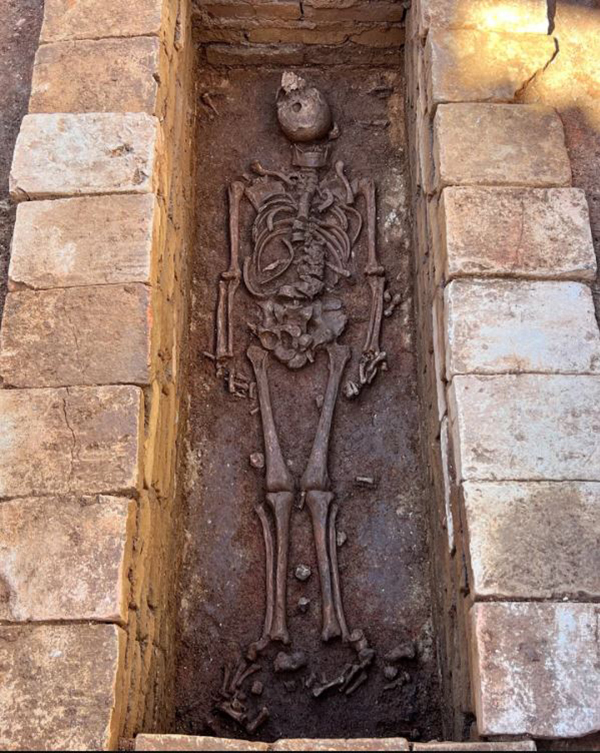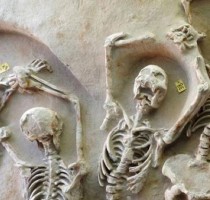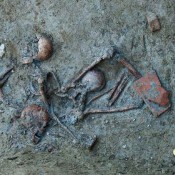Archaeological excavations in the center of Faro have revealed three graves from the ancient Roman city of Ossónoba, which may belong to the same family, something which can only be confirmed with DNA tests, said one of those responsible for the work.
The graves, possibly dating to the period between the 5th and 6th c., contained no grave goods. The man’s grave was found intact, while the other two showed signs of having been vandalized.
According to biological anthropologist Cláudia Maio, the graves “were the target of some type of spoliation that led to the disturbance, and even the destruction of some anatomical positions of the skeletons, mainly that of the child”.
From the baby’s skeleton, whose gender was not possible to determine, only the upper half and fragments of the skull were found. Archaeologists managed to recover all of its teeth, on the basis of which they will determine the age at which it died.
The question whether it was a family remains unanswered. “We tend to think it was, don’t we? A male individual, a female individual and a child, and, on top of that, graves so close together and without any verified presence of others in the surroundings. But we can’t be sure,” Cláudia Maio says.
Regarding their social and economic status, the fact that they were not buried in open graves indicates they were wealthy. In addition, the graves of the man and the woman were covered by limestone slabs that would have been reused from door jambs of some monumental building.
In the 1920s in that same area a 2nd c. mosaic dedicated to the god Ocean was discovered, which is one of the best preserved Roman mosaics in the south of the country.
In addition to the graves, hundreds of fragments were discovered
According to the project manager at ERA Arqueologia, in addition to the graves, hundreds of small fragments were also discovered, indicating that there was a second mosaic there.
The team also found dozens of coins – including one in a better state of preservation, which was minted in the reign of Emperor Constantine the Great (306-337), bone dice, nails, pins, a spoon, amphorae, carvings and many pieces of terra sigillata pottery.
In an area south of the tombs, a Roman structure was identified with small complexes where remains of metallurgical production and evidence of a dye factory were found.





